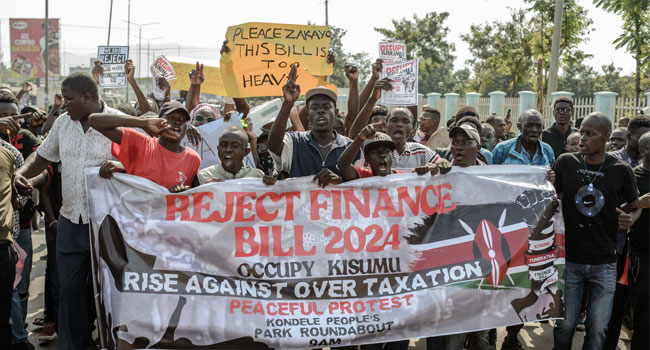In the last few days, Kenya has witnessed a series of protests driven by various socio-political and economic grievances. Among the most striking features of these protests has been the significant influence and involvement of the youth. Young Kenyans have become a formidable force, leveraging their numbers, vigour, and technological prowess to demand change and hold the government accountable.
The frustrations of unemployment, limited access to quality education, and inadequate representation in political processes have fueled a sense of disenfranchisement among the young population. These issues have galvanized the youth, making them a driving force in the protest movements.
Social media has played a pivotal role in the organization of youth-led protests in Kenya. Platforms such as Twitter, Facebook, and Instagram have been instrumental in spreading information, organizing protests, and rallying support both locally and internationally. The hashtag #EndFinanceBill was circulated widely to document and protest against the proposed tax reforms. Social media enabled real-time communication, making it easier for protestors to coordinate actions and evade crackdowns by authorities.
The digital savviness of the youth has also allowed for the creation of powerful narratives that resonate widely. Through compelling visuals, live streams, and viral posts, young Kenyans have managed to draw significant attention to their causes. This digital activism has not only brought local issues to the fore but has also garnered international solidarity and support.
Yet the influence of the youth extended beyond the digital realm. Grassroots mobilization has been key to sustaining the protests. Young leaders have emerged from various communities, organizing on-the-ground activities, and ensuring the participation of a broad cross-section of society.
Despite their significant numbers, young protesters in Kenya face numerous threats from the government, which responded to the protests with strong-arm tactics, including the use of force, arrests, and bullets. So far the protests have left 23 people dead, according to the Kenya National Commission on Human Rights
Anger at the president’s tax-collection strategies has long been simmering. Many young Kenyans struggle with unemployment amid a bitter economic crisis that has seen the value of the Kenyan shilling drop by 22 per cent against the US dollar since 2022, causing food, transport, and energy prices to soar, while incomes have largely stayed the same.
In recent years, youth-led protests in Kenya about issues such as police brutality, corruption, and electoral reforms have led to policy changes and the resignation of public officials implicated in wrongdoing. The protests have also fostered a sense of solidarity and empowerment among young people, reinforcing the idea that they can be agents of change.
Moreover, the active participation of the youth in protests has led to a broader conversation about their role in governance and decision-making processes. There is a growing recognition that addressing the concerns of the youth is crucial for the country’s stability and development. This shift in perspective could potentially lead to more inclusive and youth-friendly policies in the future.
The influence of the youth in the Kenya protests underscores the power of a motivated and organized force. Despite accusing “treasonous” individuals of attempting “to undermine security and stability,” and deploying the military against protesters, President Ruto withdrew the controversial finance bill. This is a monumental triumph for young Kenyans and their grievances. about the country’s future. Building alliances with other stakeholders, including civil society organizations, international bodies, and sympathetic political leaders, can provide the necessary support and resources to achieve long-term goals and usher in a better country.
Kenya has recently experienced a wave of youth-led protests driven by socio-political and economic grievances, such as unemployment, deficient education access, and inadequate political representation. The youth have utilized social media platforms like Twitter, Facebook, and Instagram to organize protests and rally support locally and internationally, notably circulating the hashtag #EndFinanceBill to oppose proposed tax reforms.
The protests have garnered significant attention through digital activism, including compelling visuals and live streams, and have been sustained by grassroots mobilization, with young leaders emerging at the community level. Despite facing government crackdowns that include the use of force, protesters have achieved notable successes, including President Ruto's withdrawal of a controversial finance bill.
The youth's involvement in protests has underscored their potential as agents of change, evidenced by previous movements that resulted in policy changes and public officials' resignations. This active participation has sparked broader discussions about their role in governance, potentially leading to more inclusive policies in the future. The ongoing protests also highlight the importance of building alliances with various stakeholders to support long-term goals and national development.






